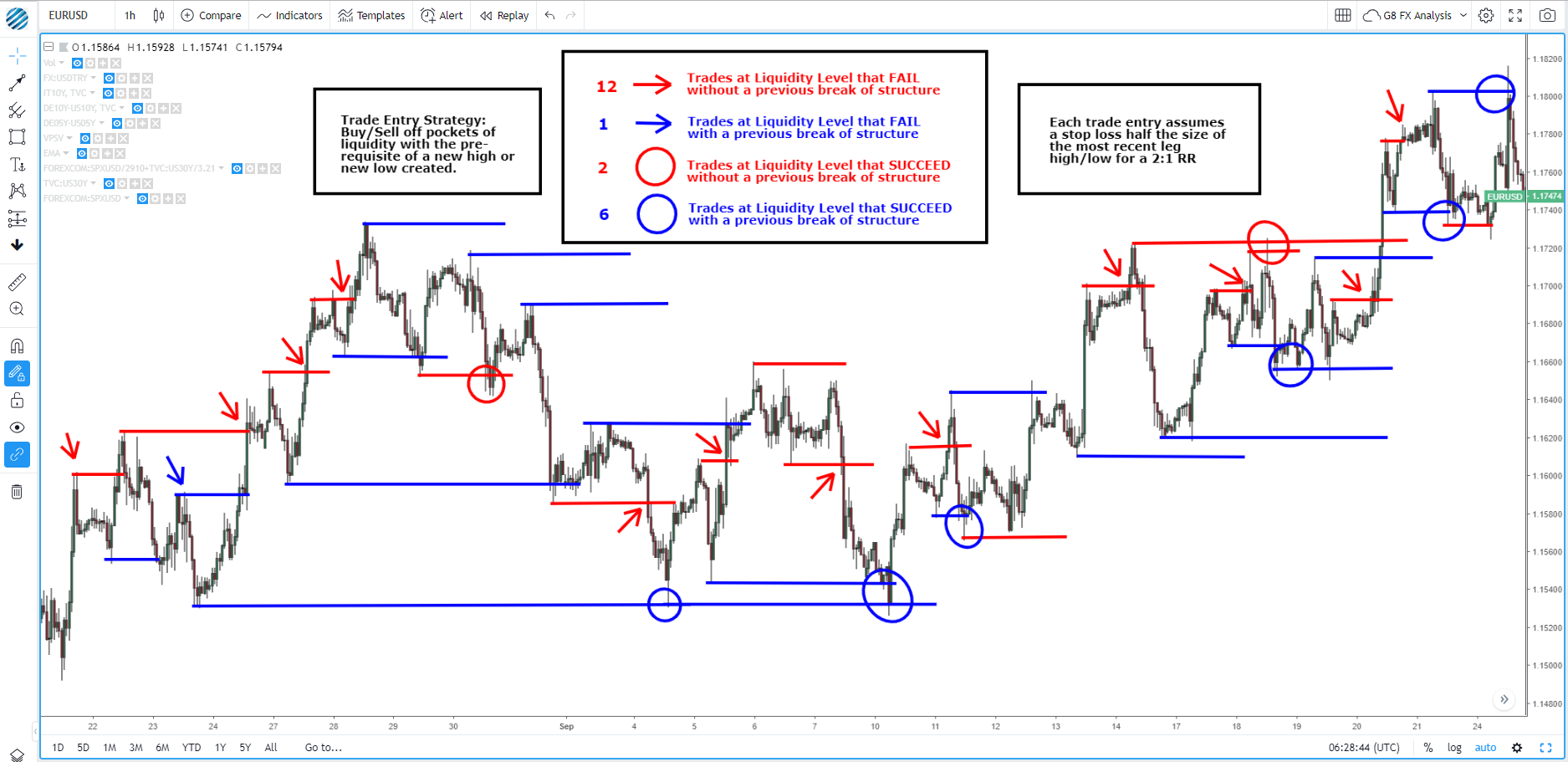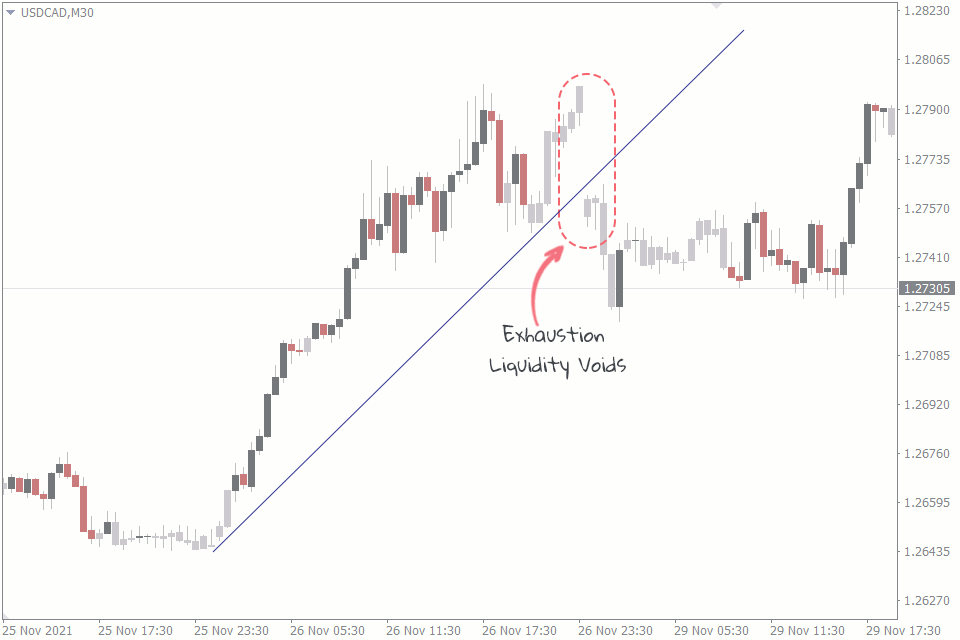Imagine yourself sitting in front of your computer, ready to execute a trade in the forex market. You’ve carefully analyzed the charts, identified a promising entry point, and are eager to capitalize on the opportunity. But then, a sudden wave of panic hits you. The price jumps wildly, your order doesn’t fill, and you’re left wondering what just happened. This scenario, unfortunately, is a common reality for forex traders who haven’t grasped the importance of liquidity.

Image: globalprimeforex.medium.com
Liquidity, in the forex market, is the lifeblood of every trade. It’s the ability to buy or sell a currency pair at the desired price, without significant price slippage or delays. Understanding liquidity is crucial for traders seeking to minimize risk, maximize profits, and achieve overall success in this dynamic market.
Decoding Liquidity in Forex Trading
What is Liquidity?
In simple terms, liquidity refers to the ease with which an asset can be bought or sold at its current market price without causing a significant change in the price. Think of it like a bustling marketplace where a large number of buyers and sellers are constantly exchanging goods. When demand and supply are balanced, transactions are effortless and efficient. Similarly, in forex, a high level of liquidity means that there are ample buyers and sellers willing to trade at current prices, ensuring smooth execution of trades.
Why is Liquidity Vital for Forex Trading?
The significance of liquidity for forex traders cannot be overstated. Here’s why:
- Faster Execution: High liquidity allows traders to enter and exit trades quickly, ensuring that their orders are filled at the desired price, minimizing slippage and reducing the risk of missing out on potentially profitable opportunities.
- Reduced Slippage: Slippage occurs when the execution price differs from the intended price, typically happening during periods of high volatility or low liquidity. Liquid markets minimize slippage, ensuring trades are executed closer to expected prices.
- Minimized Volatility: In highly liquid markets, price fluctuations are less pronounced, creating a more stable trading environment and reducing the risk of sudden, unpredictable price swings.
- Enhanced Market Depth: Liquidity signifies market depth, meaning there are many buyers and sellers at various price levels, providing ample opportunities for both entry and exit from trades.
- Lower Transaction Costs: Transaction costs, such as spreads and commissions, are often lower in liquid markets due to increased competition among brokers and market makers.

Image: investguiding.com
Identifying and Choosing Liquid Forex Pairs
Not all currency pairs are created equal when it comes to liquidity. Major currency pairs, such as EUR/USD, USD/JPY, GBP/USD, and USD/CHF, are generally the most liquid, as they involve the currencies of major global economies with high trading volumes. Minor currency pairs, like AUD/NZD or EUR/NOK, tend to have lower liquidity levels, which can result in wider spreads and increased slippage.
Before initiating a trade, it’s crucial to assess the liquidity of the chosen currency pair. Forex trading platforms often display liquidity indicators like trading volume, spread, and order book depth. High trading volume, narrow spreads, and a deep order book indicate higher liquidity, suggesting a favorable trading environment.
Liquidity and Trading Strategies
The liquidity of a currency pair can influence your trading strategy. For instance, if you’re employing a scalping strategy, which relies on capturing small price movements, high liquidity is essential for fast execution and minimal slippage. Conversely, if you’re a long-term trend trader, you may be less concerned about immediate execution and can focus on finding opportunities in less liquid pairs.
Liquidity in the Modern Forex Landscape
The forex market is constantly evolving, and the concept of liquidity is no exception. The rise of electronic trading platforms, algorithmic trading, and increased participation of institutional investors have significantly boosted liquidity levels in recent years. This has made forex trading more accessible and efficient for both individual and institutional traders.
However, it’s important to remember that even the most liquid markets can experience temporary fluctuations in liquidity, particularly during significant news events or economic releases. These periods often see increased volatility and wider spreads, making it crucial for traders to adjust their strategies accordingly.
Tips for Navigating Liquidity in Your Forex Trading
Here’s some expert advice to help you leverage liquidity for optimal trading results:
- Prioritize Liquid Currency Pairs: Focus on major currency pairs, especially during high-impact news releases and economic events.
- Stay Informed About Liquidity Levels: Monitor liquidity indicators like trading volume, spreads, and order book depth to understand the current state of the market.
- Adjust Trading Strategies: Adapt your trading strategy based on liquidity levels. For example, consider using tighter stop losses in less liquid markets to mitigate the risk of sudden price movements.
- Choose Reputable Brokers: Select a forex broker with reliable infrastructure, a broad range of trading instruments, and competitive spreads. A reputable broker will provide access to high-quality liquidity, enhancing your trading experience.
- Practice Risk Management: Never trade more than you can afford to lose, and always use appropriate risk management techniques like stop losses to protect your capital.
These tips are vital for navigating the complexities of liquidity in forex trading. While there is no foolproof method to guarantee trading success, understanding and utilizing liquidity effectively can significantly improve your chances of achieving profitable outcomes.
FAQs Regarding Liquidity in Forex Trading
Q: What is considered good liquidity in forex?
A: “Good” liquidity is relative and depends on the specific market conditions. Generally, high trading volume, narrow spreads, and deep order book depths indicate high liquidity. Consider these factors to determine whether a market is sufficiently liquid for your trading needs.
Q: How can I find the liquidity of a specific forex pair?
A: Most forex trading platforms provide liquidity indicators like trading volume, spreads, and order book depth. These indicators, along with news articles and market analysis reports, can give you insights into the liquidity of a currency pair.
Q: Does liquidity affect my trading strategy?
A: Absolutely! High liquidity is crucial for scalping strategies, allowing fast execution and minimizing slippage. For long-term trading, you might be less concerned about immediate execution and can explore opportunities in less liquid pairs.
Q: Can I trade forex without understanding liquidity?
A: While it’s technically possible, understanding liquidity is essential for successful forex trading. Ignoring liquidity can lead to poor order execution, price slippage, and potential losses.
Liquidity Trading Forex
Conclusion
Liquidity is a fundamental concept in forex trading, offering the key to smooth order execution, reduced slippage, and minimized market volatility. By focusing on liquid currency pairs, staying informed about liquidity levels, and adjusting your trading strategies accordingly, you can navigate the dynamic forex market with confidence and potentially improve your trading outcomes.
Are you interested in learning more about liquidity in forex trading? Share your thoughts and questions in the comments below. We’re excited to continue this conversation and help you master the art of navigating this vital aspect of forex trading!







